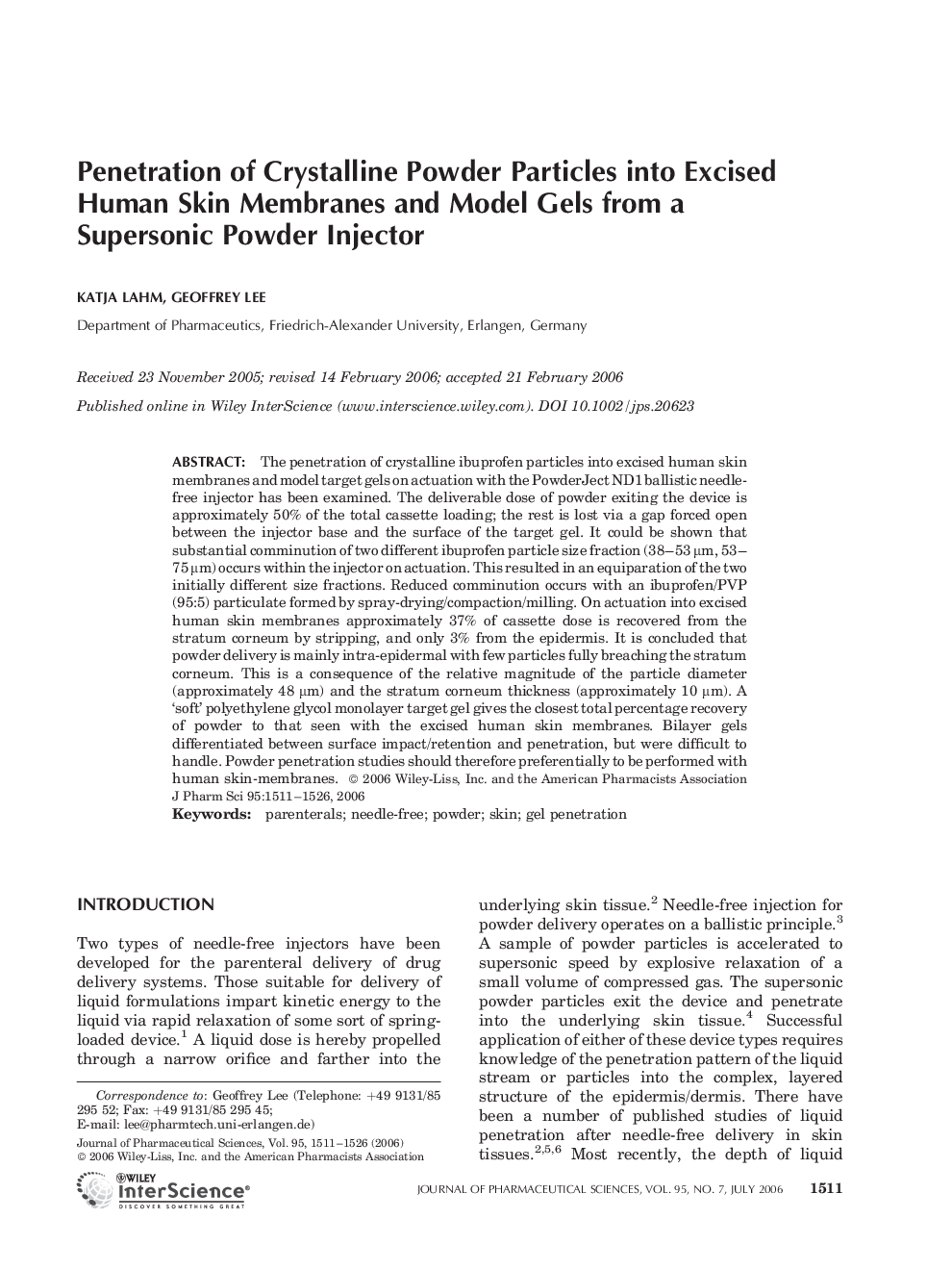| Article ID | Journal | Published Year | Pages | File Type |
|---|---|---|---|---|
| 2487936 | Journal of Pharmaceutical Sciences | 2006 | 16 Pages |
Abstract
The penetration of crystalline ibuprofen particles into excised human skin membranes and model target gels on actuation with the PowderJect ND1 ballistic needle-free injector has been examined. The deliverable dose of powder exiting the device is approximately 50% of the total cassette loading; the rest is lost via a gap forced open between the injector base and the surface of the target gel. It could be shown that substantial comminution of two different ibuprofen particle size fraction (38-53 µm, 53-75 µm) occurs within the injector on actuation. This resulted in an equiparation of the two initially different size fractions. Reduced comminution occurs with an ibuprofen/PVP (95:5) particulate formed by spray-drying/compaction/milling. On actuation into excised human skin membranes approximately 37% of cassette dose is recovered from the stratum corneum by stripping, and only 3% from the epidermis. It is concluded that powder delivery is mainly intra-epidermal with few particles fully breaching the stratum corneum. This is a consequence of the relative magnitude of the particle diameter (approximately 48 µm) and the stratum corneum thickness (approximately 10 µm). A 'soft' polyethylene glycol monolayer target gel gives the closest total percentage recovery of powder to that seen with the excised human skin membranes. Bilayer gels differentiated between surface impact/retention and penetration, but were difficult to handle. Powder penetration studies should therefore preferentially to be performed with human skin-membranes. © 2006 Wiley-Liss, Inc. and the American Pharmacists Association.
Keywords
Related Topics
Health Sciences
Pharmacology, Toxicology and Pharmaceutical Science
Drug Discovery
Authors
Katja Lahm, Geoffrey Lee,
